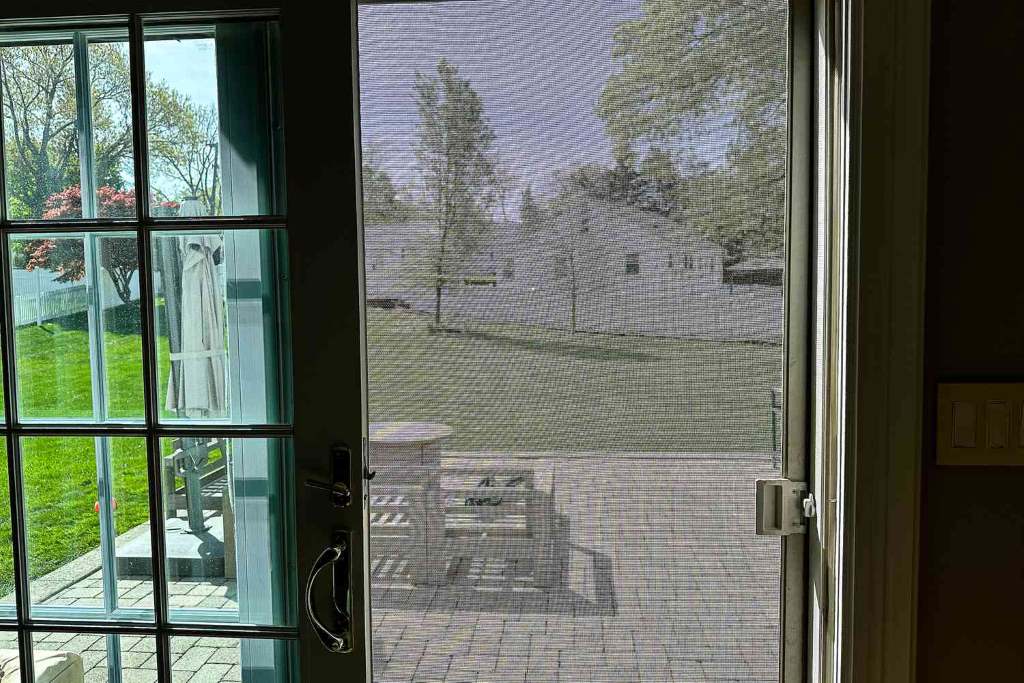Your screen door lets fresh air in. It’s a great feature for any home. But if you have pets, it’s also a target for scratches and tears. A screen door pet grille is the solution. It guards your screen door from pet damage while keeping your furry friends safe. Installing one is easier than you think! This guide walks you through every step to install a pet grille. You’ll also learn why it’s a must-have for pet owners.
Did you know? About 70% of U.S. households own a pet, according to the American Pet Products Association. Many of these homes face screen door damage from pets. A 2023 survey by the National Association of Home Builders found that 62% of pet owners reported home damage, including torn screens. A pet grille can save you from costly repairs and keep your home secure. Let’s dive into how to install a screen door pet grille and why it’s a game-changer.
Why You Need a Screen Door Pet Grille
Pets love to paw at screen doors. They see the outdoors and want to explore. But their claws and teeth can shred delicate screen material. A pet grille adds a strong barrier. It stops pets from breaking through while letting air flow. Here’s why it’s a smart choice:
- Protects Your Screen Door: A pet grille prevents scratches and tears. It extends the life of your sliding or swinging screen doors.
- Keeps Pets Safe: It limits pets from escaping through the screen. This reduces the risk of them getting lost.
- Saves Money: Replacing a damaged screen door costs $100–$300 on average. A pet grille, often under $60, is a cheaper fix.
- Enhances Home Safety: Grilles also protect small children from pushing through screens.
Whether you have a rambunctious dog or a curious cat, a pet grille is a must. It’s ideal for sliding patio screen doors, RV screen doors, or even camper screen door protectors.
Choosing the Right Pet Grille
Not all pet grilles are the same. You need one that fits your door and your pet’s needs. Here’s how to pick the perfect one:
Consider Your Door Type
Pet grilles work on both sliding screen doors and swinging screen doors. Check your door’s width before buying. Standard sizes include 30-inch, 36-inch, and 48-inch grilles. For example, the Guardian Steel Pet Grille (36 Inch) fits most sliding patio screen doors.
Material Matters
Look for durable materials like steel or aluminum alloy. Steel pet grilles, like those from Home Depot, are powder-coated for rust resistance. Aluminum options, such as the Imperial Sliding Screen Door Guard, are lightweight yet strong.
Check for Easy Installation
Choose a grille with mounting hardware included. Most grilles, like the Saint-Gobain Brown Screen & Storm Door Grille, come with screws and simple instructions.
Pet Size and Behavior
Measure your pet’s shoulder width. The grille should cover enough area to stop them from scratching. For very active or large dogs, consider a heavy-duty screen guard. The Hale Pet Door Screen Model includes a stabilizer bar kit for extra strength.
Aesthetic Appeal
Some grilles, like those with a Florentine pattern, add a decorative touch. Pick a color finish, such as powder-coat bronze or black, to match your door.
Pro Tip: Check the product size label before buying. Ensure it fits your door frame to avoid returns.

Tools and Materials Needed
Before you start, gather these tools and materials:
- Pet Grille Kit: Includes the grille and mounting hardware.
- Drill: For making pilot holes.
- Screwdriver: Phillips head for securing screws.
- Measuring Tape: To measure your door and grille placement.
- Clamps: To hold the grille in place during installation.
- Pencil: For marking drill points.
- Safety Gear: Gloves and eye protection.
Most kits, like the Guardian Built Pet Grille, require minimal tools. Double-check that your kit includes 3/16” Phillips head screws or similar hardware. Explore Which material is best for your front door?
Step-by-Step Guide to Install a Screen Door Pet Grille
Follow these steps to install your pet grille. This guide works for most sliding screen door grills and swinging screen door guards.
Step 1: Measure Your Door
Measure the width of your screen door. Common sizes are 30”, 36”, or 48”. Ensure the grille fits snugly. For example, a 36 in. x 30 in. Bronze Steel Pet Grille fits most standard sliding patio doors. If your door is wider, like 47 inches, check for custom sizes.
Step 2: Prepare the Door
Clean the screen door frame. Remove any dirt or debris. This ensures a secure fit. If your door has a kickplate, place the grille above it. Most grilles are 24–30 inches tall, so they don’t require a kickplate.
Step 3: Position the Grille
Line up the pet grille on the inside of the screen door. Place it at the bottom to cover the area pets target. Use clamps to hold it in place. Mark the screw holes with a pencil. For sliding screen doors, ensure the grille doesn’t block the sliding mechanism.
Step 4: Drill Pilot Holes
Drill small pilot holes where you marked. Be careful not to drill through the entire door frame. This prevents damage to the outer frame. Use a drill bit slightly smaller than the screws provided.
Step 5: Secure the Grille
Attach the grille using the provided mounting hardware. Tighten the screws with a screwdriver. Check that the grille is firm and doesn’t wobble. For added stability, some grilles, like the Super Guard Grilles, use an interlock design.
Step 6: Test the Door
Open and close the screen door. Ensure the grille doesn’t interfere with the door handle or sliding mechanism. The grille should allow normal operation while blocking pet access.
Step 7: Clean Up
Remove any clamps and clean the area. Wipe down the grille and frame. Your screen door is now pet-proof!
For a visual guide, watch installation videos from Ideal Pet Products or Screens & Things. They show the process in action.
Alternative Options: Pet Doors vs. Pet Grilles
A pet grille stops damage but doesn’t let pets pass through. If you want your pet to go in and out, consider a specialty pet door. Here’s a quick comparison:
- Pet Grille:
- Stops pets from breaking through.
- Ideal for keeping pets inside.
- Easy to install with basic tools.
- Fits most screen doors (e.g., RV entry screen doors).
- Pet Door:
- Allows pets to enter and exit.
- Requires cutting a hole in the screen.
- Needs a vinyl flap or magnetic closure for sealing.
- Best for active pets needing outdoor access.
For pet doors, check the recommended weight range of the pet and flap size. The Hale Pet Door Screen Model fits into lower corners of screen frames. It’s reversible and works for dogs up to 100 pounds.
If you choose a pet door, ensure it matches your porch design. A pet door flap size should be wider than your pet’s shoulder for easy passage.
Maintenance Tips for Your Pet Grille
A pet grille is low-maintenance but needs occasional care. Follow these tips:
- Clean Regularly: Wipe the grille with a damp cloth to remove dirt.
- Check Screws: Tighten loose screws every few months.
- Inspect for Damage: Look for dents or bends in the expanded metal. Replace if needed.
- Lubricate Sliding Doors: Use a silicone spray on sliding patio screen doors for smooth operation.
A well-maintained grille lasts years. Powder-coated construction resists rust, but check for chips in the paint.
Benefits of a Pet Grille for Different Homes
Pet grilles aren’t just for standard homes. They work in various settings:
- RV Camping: RV screen doors are prone to pet damage. A camper screen door protector keeps your setup intact.
- Rental Homes: Avoid costly repairs with a removable pet grille.
- Families with Kids: Screen protectors also stop kids from pushing through screens.
- Garden Homes: Pair with garden trellises for a cohesive outdoor look.
For example, the Rockwood Roo RV model benefits from a custom aluminum grille. It blends style and function.
Common Mistakes to Avoid
Don’t make these errors when installing your pet grille:
- Wrong Size: Always measure your door. A 30-inch grille won’t fit a 36-inch door.
- Drilling Too Deep: Only drill through the outer frame to avoid damage.
- Skipping Clamps: Clamps keep the grille steady during installation.
- Ignoring Pet Behavior: Very active dogs need heavy-duty grilles, not basic ones.
Check the manufacturer’s limited warranty for details on returns or defects. Brands like Guardian Built offer 30-day refunds for unused items.
FAQs
How do I know if a pet grille fits my screen door?
Measure your door’s width. Choose a grille that matches (e.g., 30”, 36”, or 48”). Check the product label for compatibility.
Can I install a pet grille on a sliding screen door?
Yes. Most grilles, like the Imperial Sliding Screen Door Guard, are designed for sliding doors. Ensure it doesn’t block the track.
How long does installation take?
Installation takes 10–20 minutes with basic tools like a drill and screwdriver.
Are pet grilles safe for all pets?
Yes, but choose a grille based on your pet’s size and strength. Large dogs may need a steel pet grille with a stabilizer bar.
Can I use a pet grille with a magnetic screen door?
Yes, but ensure the grille doesn’t interfere with the magnetic closure. Check for adjustable width options.
Conclusion
A screen door pet grille is a simple, affordable way to protect your home. It stops pet damage, keeps pets safe, and saves you money. With durable materials like steel or aluminum, it’s built to last. Follow our step-by-step guide to install it in minutes. Your screen door will thank you, and so will your pets!
Ready to get started? Visit Home Depot or Amazon to find the perfect pet grille. Measure your door, grab your tools, and make your home pet-proof today!
References:
- American Pet Products Association: https://www.americanpetproducts.org/press_industrytrends.asp
- National Association of Home Builders: https://www.nahb.org
- Screens & Things Installation Guide: https://www.screensandthings.net
- Home Depot Pet Grille Product Page: https://www.homedepot.com





Leave a Reply